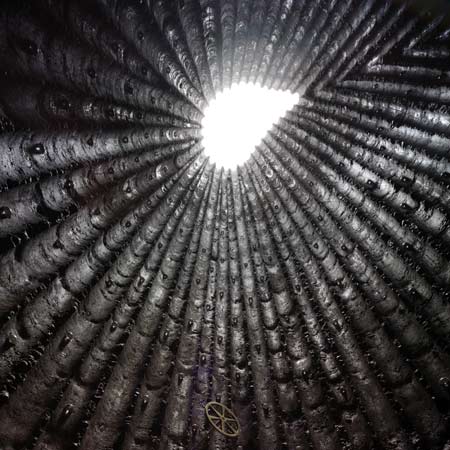
Here’s a selection of projects by architect Peter Zumthor, who was named 2009 Pritzker Architecture Prize Laureate earlier this week (see our previous story).
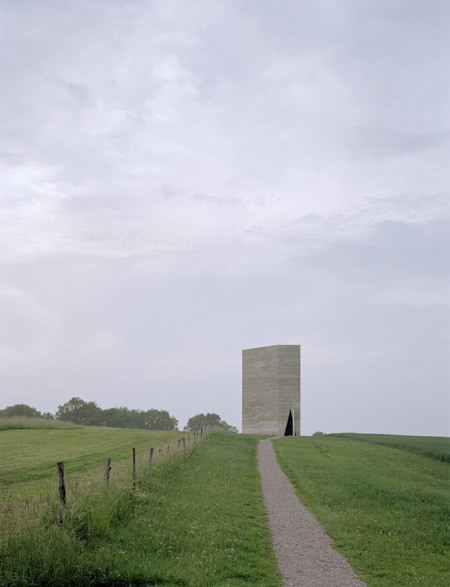
Captions are from Peter Zumthor. Above photo by Walter Mair.
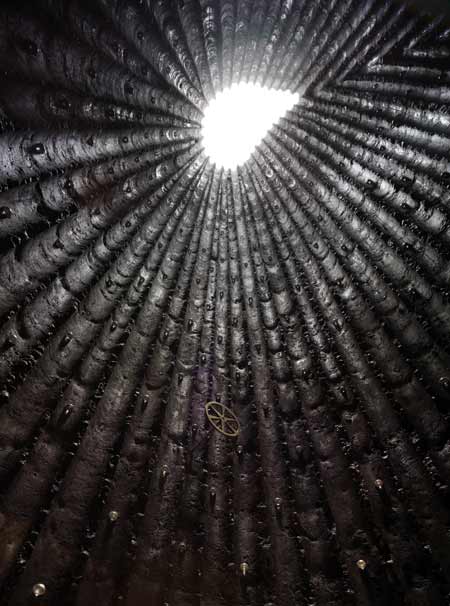
Above: Brother Klaus Field Chapel, 2007
Wachendorf, Eifel, Germany
The field chapel dedicated to Swiss Saint Nicholas von der Flüe (1417–1487), known as Brother Klaus, was commissioned by farmer Hermann-Josef Scheidtweiler and his wife Trudel and largely constructed by them, with the help of friends, acquaintances and craftsmen on one of their fields above the village. Photos above and below by Pietro Savorelli.
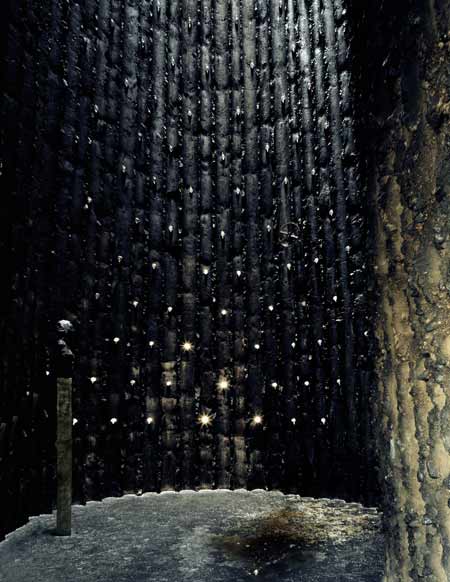
The interior of the chapel room was formed out of 112 tree trunks, which were configured like a tent. In twenty-four working days, layer after layer of concrete, each layer 50 cm thick, was poured and rammed around the tent-like structure.
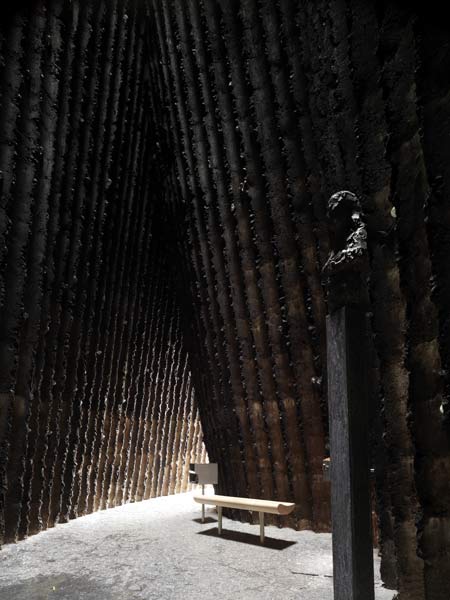
In the autumn of 2006, a special smouldering fire was kept burning for three weeks inside the log tent, after which time the tree trunks were dry and could easily be removed from the concrete shell.
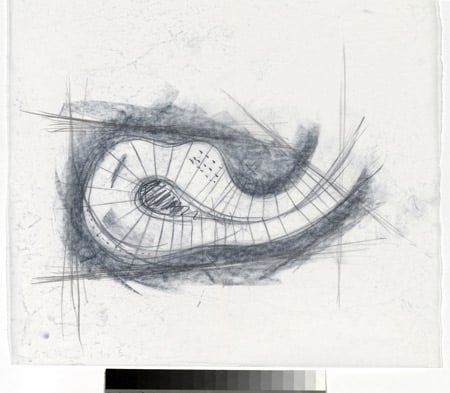
The chapel floor was covered with lead, which was melted on site in a crucible and manually ladled onto the floor. The bronze relief figure in the chapel is by sculptor Hans Josephsohn.
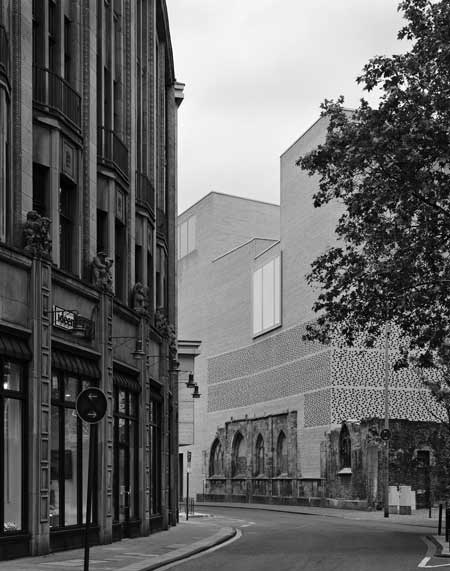
Above and below: Kolumba Art Museum of the Cologne Archdiocese, 2007
Cologne, Germany
The Art Museum of the Cologne Archdiocese was to be a “living museum”. It shows objects from its own permanent collection ranging from late antiquity to the present: Romanesque sculptures, installations, medieval paintings, “radical paintings”, gothic ciboria and 20th-century objects of daily use are presented in changing juxtapositions. Photos by Helene Binet.
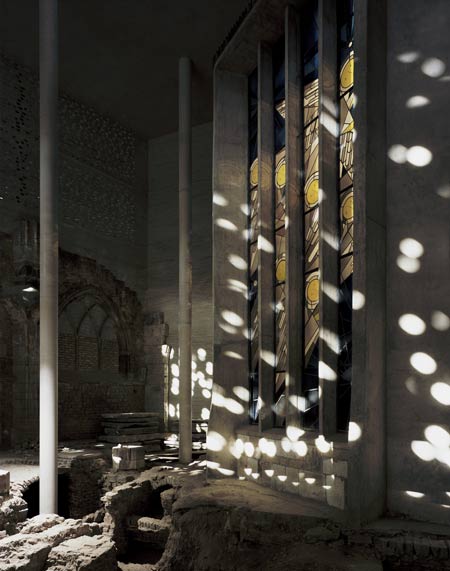
The new building in the city centre rises from the ruins of the late gothic Saint Kolumba Church, destroyed in World War II.
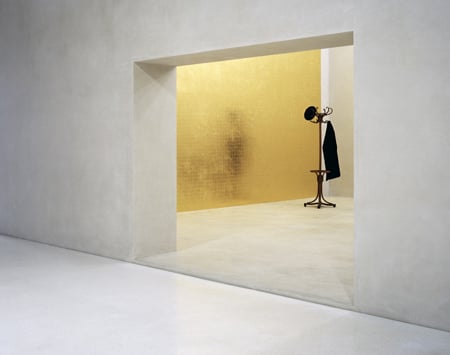
Its ground floor contains a large archaeological excavation site with the remains of previous church buildings which date back 7th century, and the chapel “Madonna in den Trümmern” (Madonna among the Ruins) built by Gottfried Böhm in 1949/50.
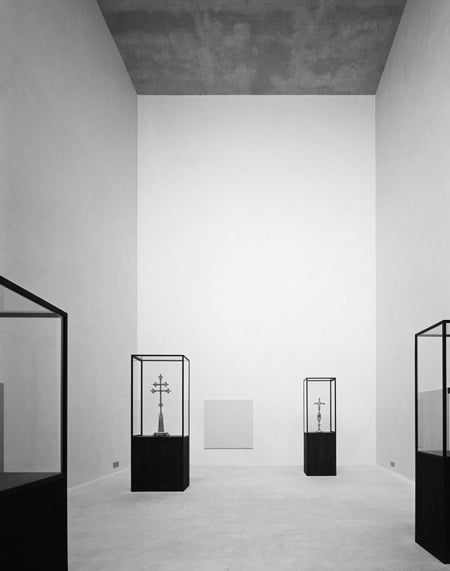
These givens led to a building that provides seventeen galleries of different proportions and with different lighting on three floors with a total floor space of 1,750 square meters.
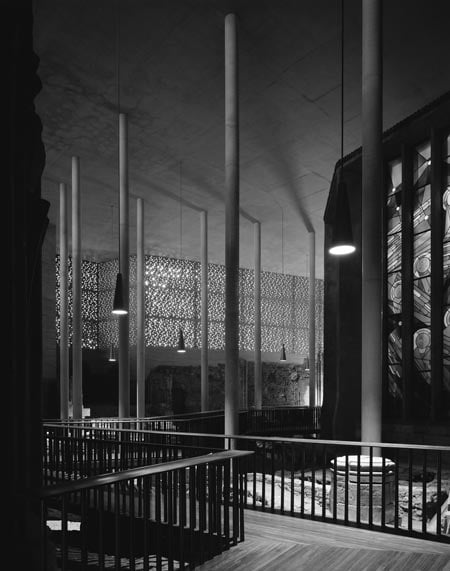
Below: Swiss Sound Box, Swiss Pavilion, Expo 2000
Hanover, Germany
We called the Swiss Pavilion for the 2000 Hanover Expo “Klangkörper Schweiz”.
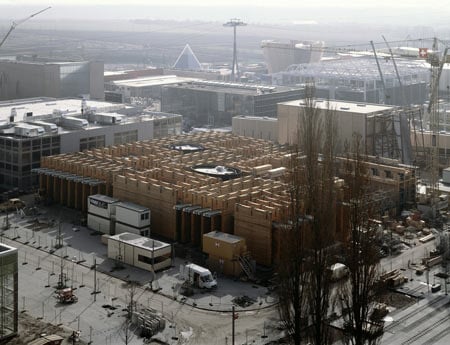
Instead of showing theoretical or virtual information to promote Switzerland, our basic idea was to offer something concrete to Expo visitors, who would be tired from studying all the messages in the other national pavilions: a welcoming place to rest, a place to just be, a place offering a tasty little something from Switzerland for thirsty or peckish visitors, and live music “unplugged”, moving and changing throughout the space, a relaxed atmosphere as well as beautifully dressed attendants. Above and below photos by Walter Mair.
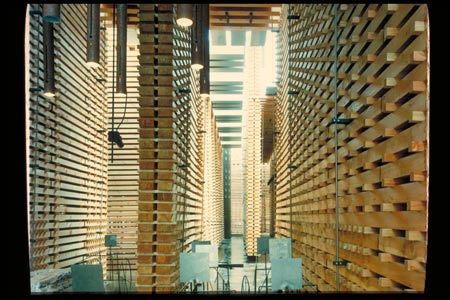
Photos below this page by
Thomas Flechtner
The idea of creating a Gesamtkunstwerk had fired our imagination. Dramatic music played by musicians moving around, culinary offers, fashion and key words about Switzerland written in light on the eams and with a light hand: all this was designed to merge with the architecture, a spatial structure of wooden beams.
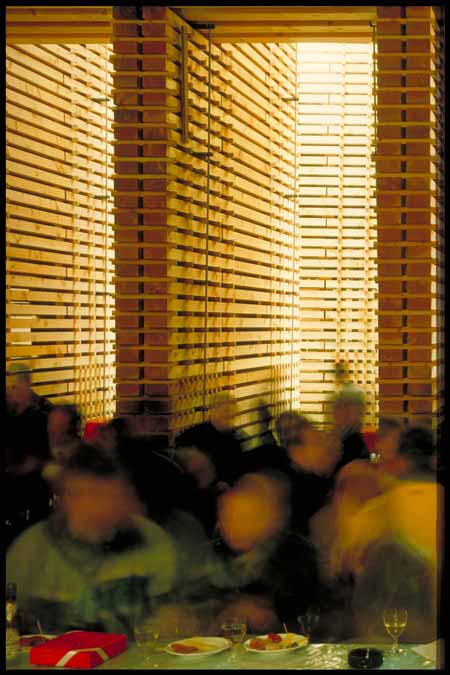
Taking the Expo theme of sustainability seriously, we constructed the pavilion out of 144 km of lumber with a cross-section of 20 x 10 cm, totalling 2,800 cubic metres of larch and Douglas pine from Swiss forests, assembled without glue, bolts or nails, only braced with steel cables, and with each beam being pressed down on the one below. After the closure of the Expo, the building was dismantled and the beams sold as seasoned timber.
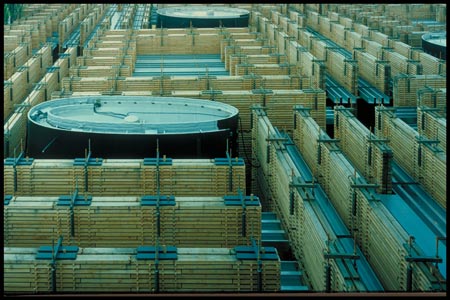
Above: Luzi House Jenaz, 2002
Graubünden, Switzerland
Private residence with a separate granny flat or a “Stoeckli” as it is called in Switzerland. Clients: a local couple with six small children in the centre of Jenaz. Below photos by Walter Mair.
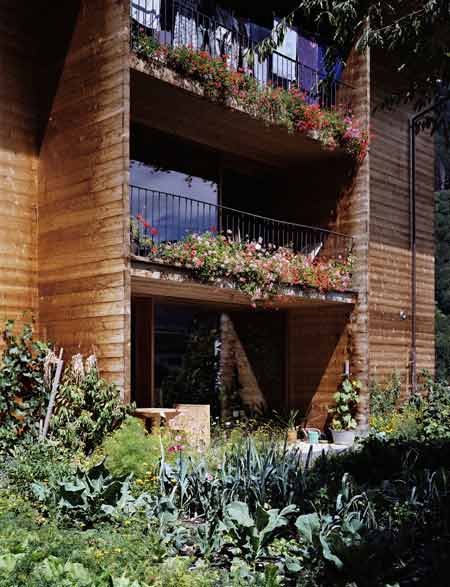
“A spacious, expansive house with light-filled rooms, everything constructed of solid wood; a further development of the blockhouses typical of this village, without any extra frills, with large windows and large balconies full of flowers” – as the couple specified in the brief.
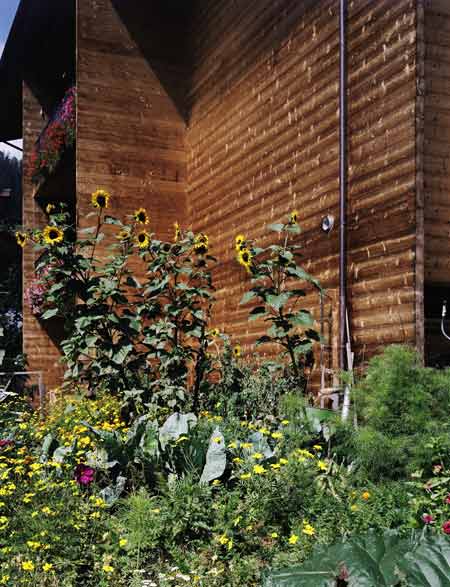
Below: Spittelhof Estate, 1996
Biel-Benken, Baselland
Switzerland
The town of Biel-Benken near the Alsace border is a desirable residential area near Basel. People work in the city and live in the country, in a house with a garden. Photos by Helene Binet.
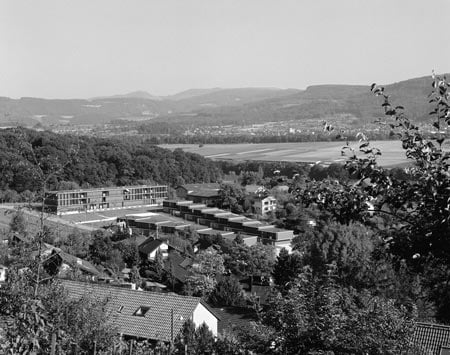
Building a small residential estate here, in a prime location at the upper edge of the village and below the historic Spittelhof farm, required special permission from the village council.
The semi-private Basellandschaftliche Beamtenversi-cherungskasse (an organisation that insures civil servants) acted as developer/investor; their brief called for rental flats and terraced houses at a ratio of roughly 1:1. We built two rows of terraced housing with gardens on the south side and a building with rental units (which at the time we called “Kulm”/ Summit ) at the upper edge of the central green courtyard.
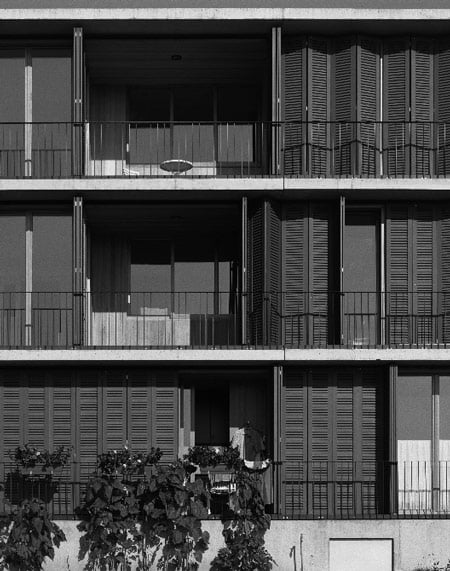
The bedrooms face east towards the nearby forest, while the living rooms have a wide view to the west and the hills of the Sundgau region. The “Kulm” contains five ground-floor flats for elderly people and on the two upper floors ten lats of different sizes, all with separate access stairs and entrances from the canopied forecourt on the east side. The floor plans of all three buildings were designed to provide light-filled living rooms and bedrooms lined up – porch-like – along the facades.
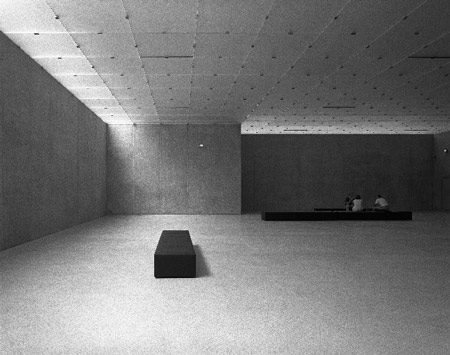
Above and below: Kunsthaus Bregenz, Vorarlberger Landesgalerie – Museum and Administration Buildings, 1997
Bregenz, Austria
The competition brief of 1989 called for a conventional provincial gallery. Step by step, the special format of the house as a Kunsthalle evolved into a four-storey building. Administration, café and museum shop were relocated to a separate structure in front of the museum proper. Photos by Helene Binet
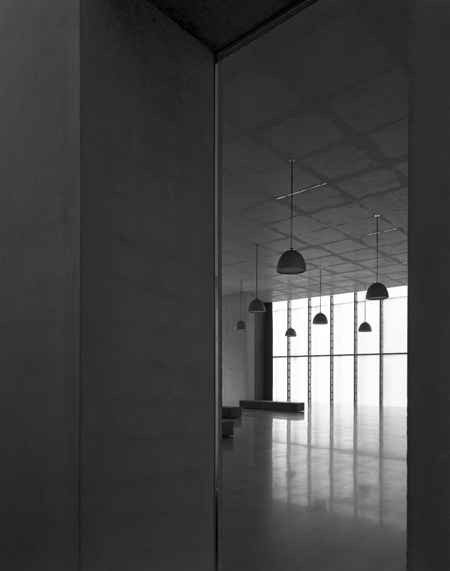
Initially we planned to direct daylight into the building through obliquely placed facade slats. Tested on models, this solution proved unsatisfactory. The best results were obtained by using etched glass shingles that refract the light before it enters the building.
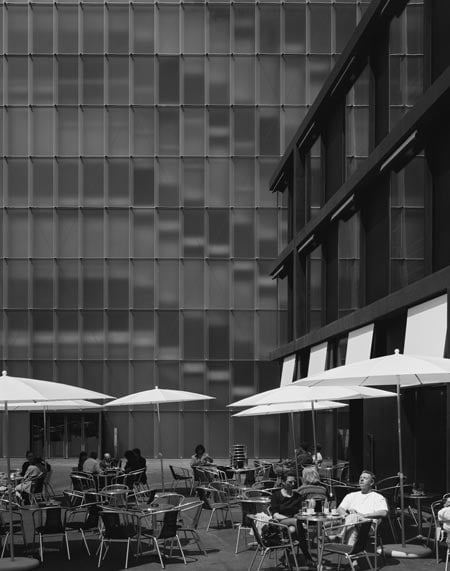
No matter what direction the light is coming from, it is always transmitted horizontally into the interior. Therefore, we placed a cavity above every floor to catch the light coming in from all four sides.
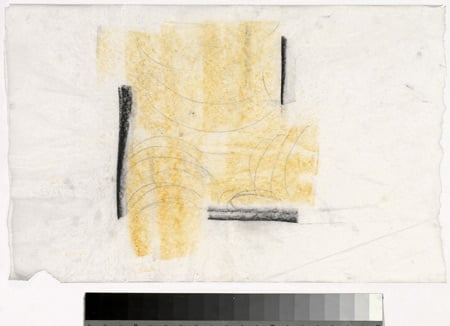
And now, once again, we exploited the ability of the etched glass to diffuse the light; it strikes the glass ceiling and is deflected down into each exhibition gallery. To encourage a special form of concentration on the four stacked exhibition floors, the building was designed without windows. And yet daylight is everywhere.
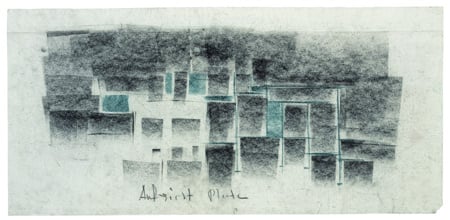
1996
ermal Bath Vals
Graubünden, Switzerland
In 1983 the commune of Vals acquired the bankrupt hotel complex, built in the 1960s, for very little money, but without much enthusiasm. But something had to be done in order to rescue existing jobs. When a larger new building with integrated thermal baths and new guest rooms proved too costly, the authorities opted for the thermal baths as a first step. Photos by Helene Binet.
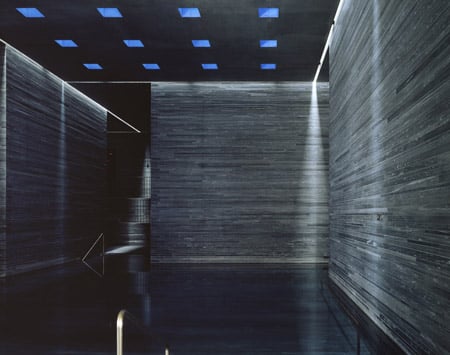
We were told it should be something special, unique. It should fit in with Vals and attract new guests. In 1991 the project was presented at a village meeting with a water-filled stone model. Construction started in 1994, and the thermal baths were opened in 1996. Since then, over 40,000 people have visited them every year. Since completion, the overnight stays in the village and in the Hotel Therme have increased by about 45 per cent.
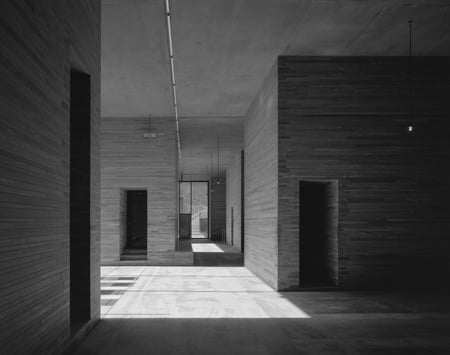
The load-bearing composite structure of the baths consists of solid walls of concrete and thin slabs of Vals gneiss broken and cut to size in the quarry just behind the village.
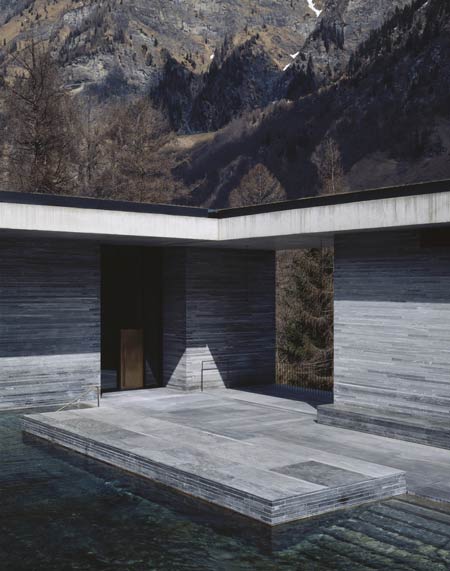
The thermal water which comes from the mountain just behind the baths has a temperature of 30°C.
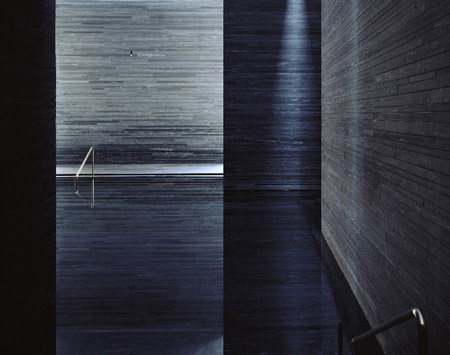
Below: Truog House (extension and renovation), 1994
Gugalun, Versam
Graubünden, Switzerland
Relatives of the present owner lived in and ran the small Gugalun farm in Arezen at the entrance to the Safien Valley. The small manor house looks north, facing the moon (luna), as the name of the estate indicates. Photos by Helene Binet.
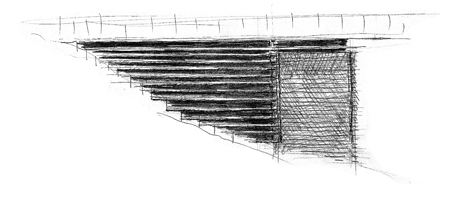
To make the simple wooden house habitable in future, an extension was built. It contains a kitchen, bathroom and bedroom and a modern hypocaust heating system. To create the space for the annex, the late 19th-century kitchen at the back of the house, on the side of the mountain slope, was demolished, while the entire 17th-century living-room section was preserved. A new roof connects the old and the new.
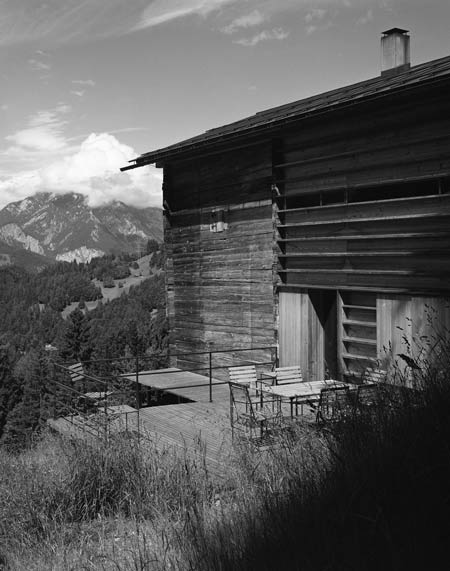
Below: Homes for Senior Citizens, 1993
Chur, Masans,
Graubünden, Switzerland
The twenty-two flats of the residential development for the elderly in Masans near Chur are occupied by senior citizens still able to run their own households, but happy to use the services offered by the nursing home behind their own building.
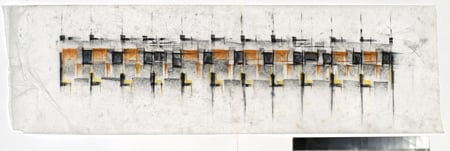
Many of the residents grew up in mountain villages around the area. They have always lived in the country and feel at home with the traditional building materials used here – tuff, larch, pine, maple, solid wood flooring and wooden panelling. Photos by Helene Binet.
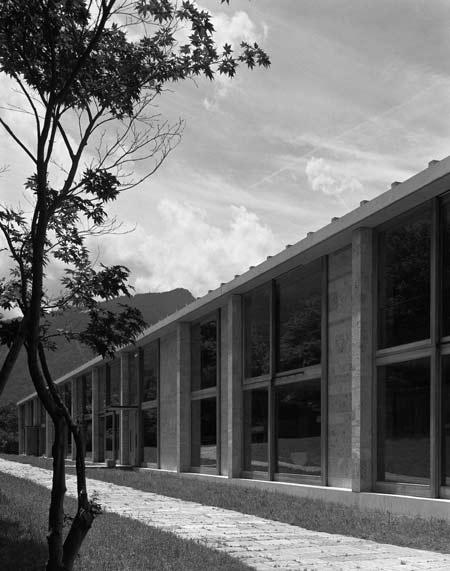
The residents are welcome to furnish as they please their section of the large entrance porch to the east, which they overlook from their kitchen windows, and they make ample use of this opportunity. The sheltered balcony niches and the living room bow (bay) windows on the other side face west, up the valley, towards the setting sun.
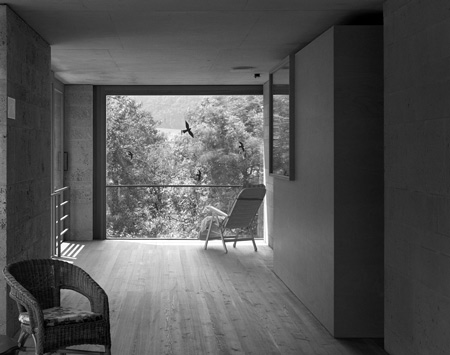
Below: Saint Benedict Chapel, 1988
Sumvitg,
Graubünden, Switzerland
In 1984 an avalanche destroyed the baroque chapel in front of the village of Sogn Benedetg (St. Benedict). A recently built parking lot had acted like a ramp pushing the snow from the avalanche up against the chapel. Photo by Helene Binet.
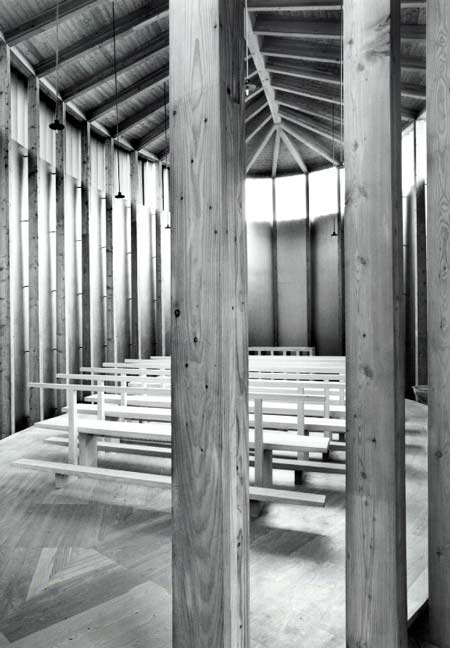
The new site on the original path to the Alp above the small village is protected from avalanches by a forest. The new wooden chapel, faced with larch wood shingles, was inaugurated in 1988.
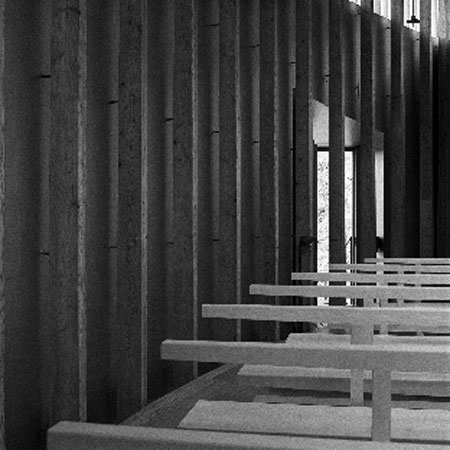
The village authorities sent us the building permit with the comment “senza perschuasiun” (without conviction). Yet the abbot and monks of the Disentis Monastery and the then village priest Bearth wanted to build something new and contemporary for future generations.
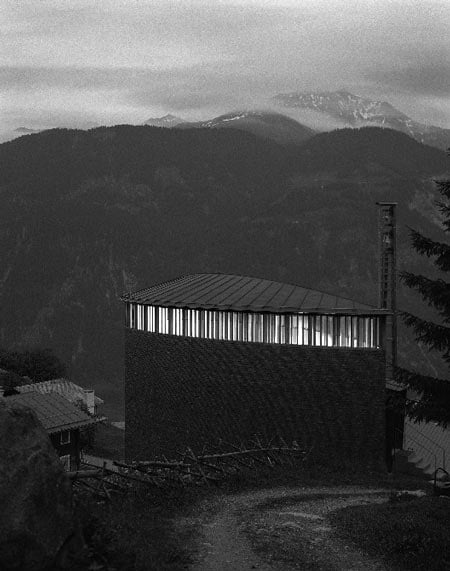
Below: Protective Housing for Roman Excavations, 1986
Chur, Graubünden, Switzerland
In the 4th century AD, Chur was the Roman capital of the province of Curia – hence the name “Chur”. The Romans inhabited the area now called the “Welschdörfli” (French-speaking Swiss village), Chur’s small amusement strip just off the historic town centre, where, it is said, people still spoke “Churerwelsch” though the people in town were already speaking German. Photos by Helene Binet.
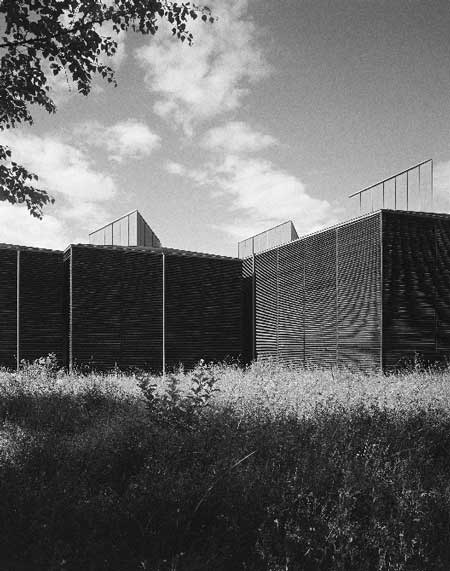
Archaeological excavations in this area have uncovered a complete Roman quarter. The protective structures – wind-permeable wooden enclosures – follow the outer walls of three adjacent Roman buildings (only a small part of one of these was excavated). The site’s display cases along the street skirt the protruding foundations of the former house entrances.
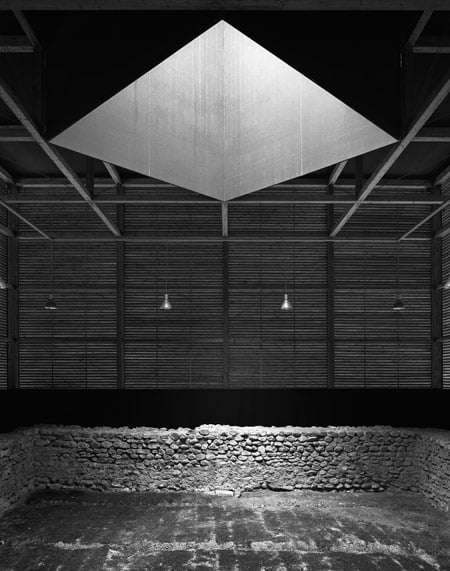
A wall painting was found lying on the floor of the larger building. Restored and returned to its original position, it gives an impression of the probable height of the single-storey houses. The charred remains of a wooden floor at the back of the larger building are from Roman times.
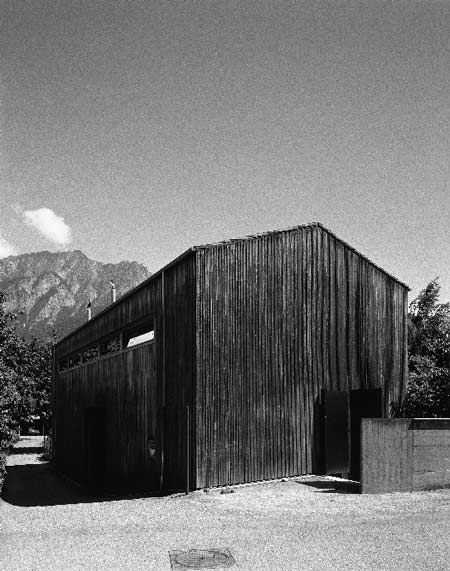
Above and below: Zumthor Studio , 1986
Haldenstein, Graubünden
Switzerland
In the early 1980s we were able to buy an old farmhouse with some land right next to the farmhouse in the Süsswinkel in Haldenstein which we had converted in 1971 into our family home. Unfortunately the newly acquired house received very little sunlight, having been built onto the north side of a neighbouring house. We drew up many conversion plans in order to lure the sun into the house, without much success. Photos by Helene Binet
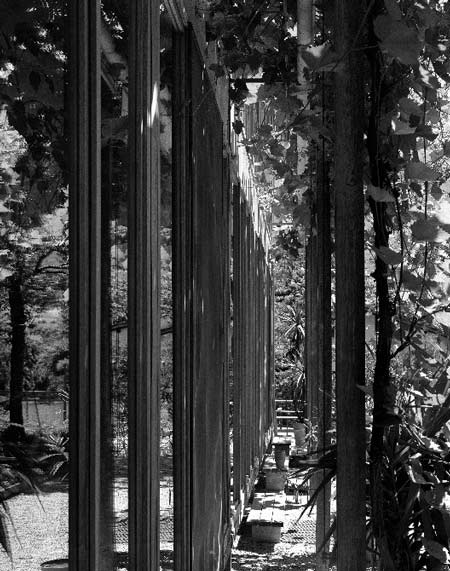
Finally we decided to take the leap: we pulled down the old house and replaced it with a new studio house and garden. The new wooden building – a reference to the barns, stables and workshops in the village, and a salute to the few fellow architects in the Vorarlberg region who had begun building good new houses of wood – now occupies the northern, and the garden the southern section of the site, as is proper. The studio contains two south-facing rooms: the upper one for working, the ground-floor one with a fireplace, a view of the garden and a small kitchen for entertaining.
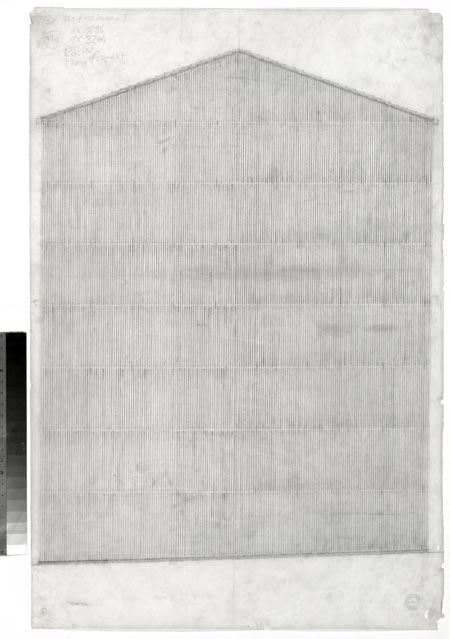
For a long time a concert piano stood there under a wall painting by Matias Spescha and, in front of the fireplace, a group of easy chairs with the sofa that Alvar Aalto designed for Wohnbedarf in Zurich. Today the room is used as a drawing studio.




所有评论